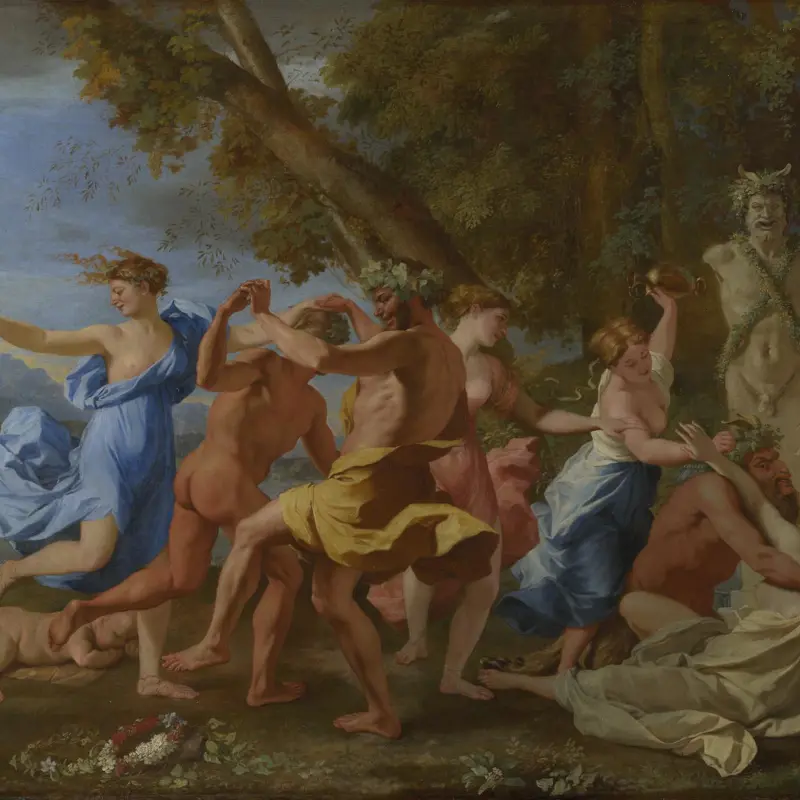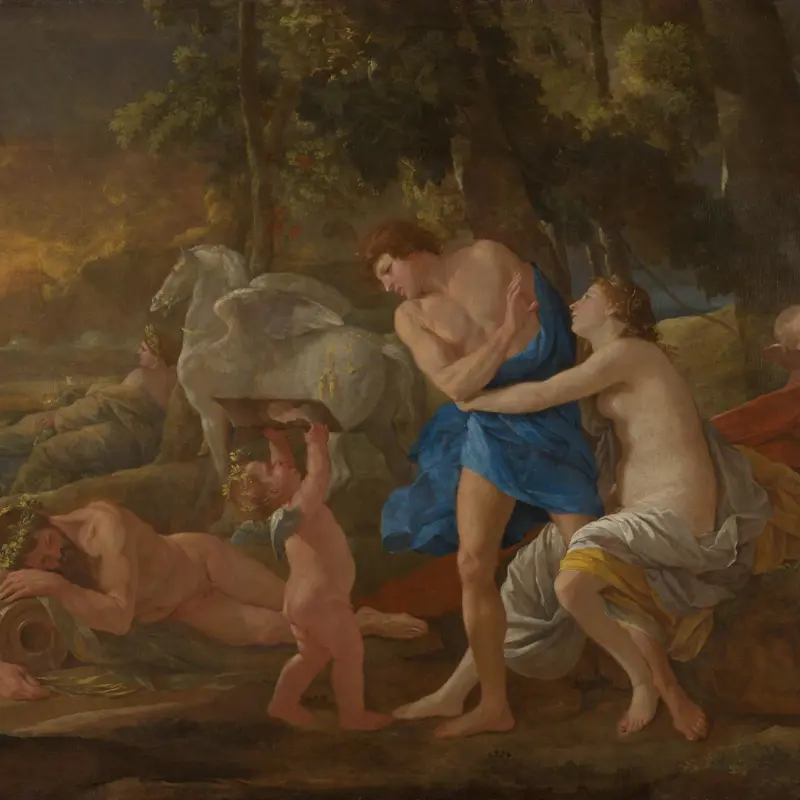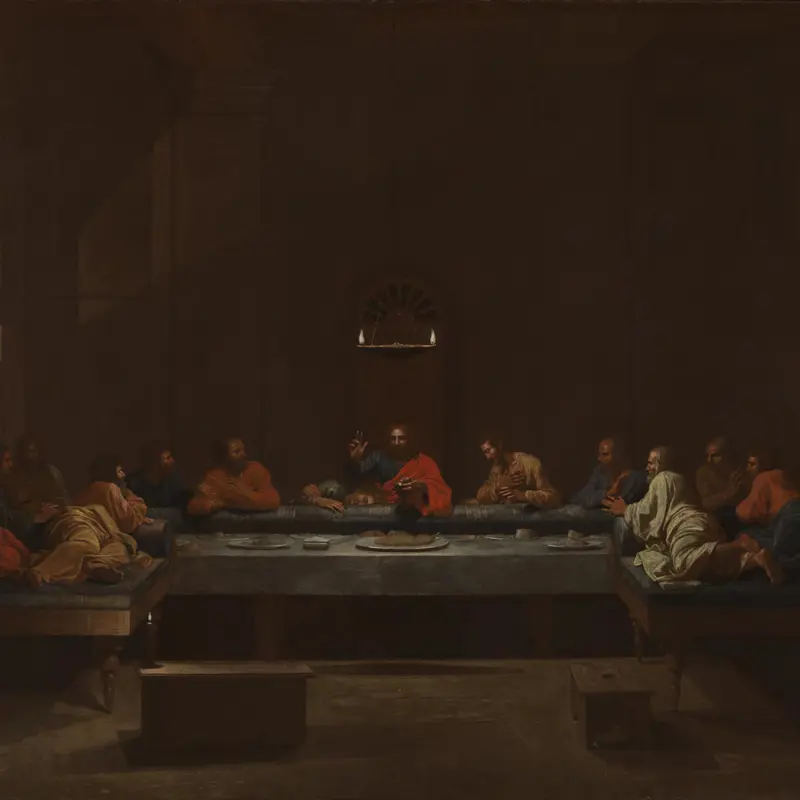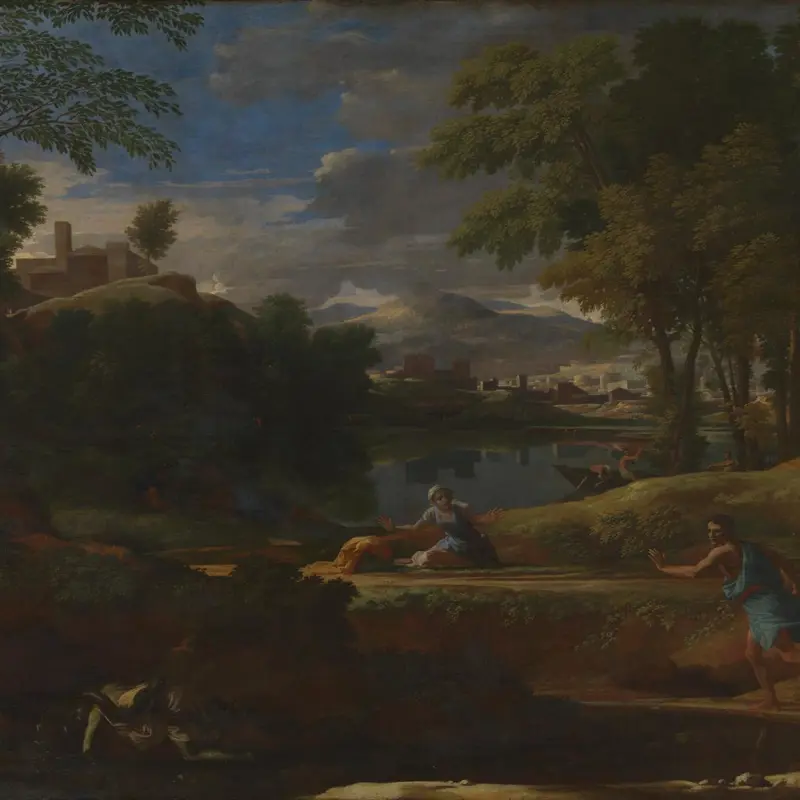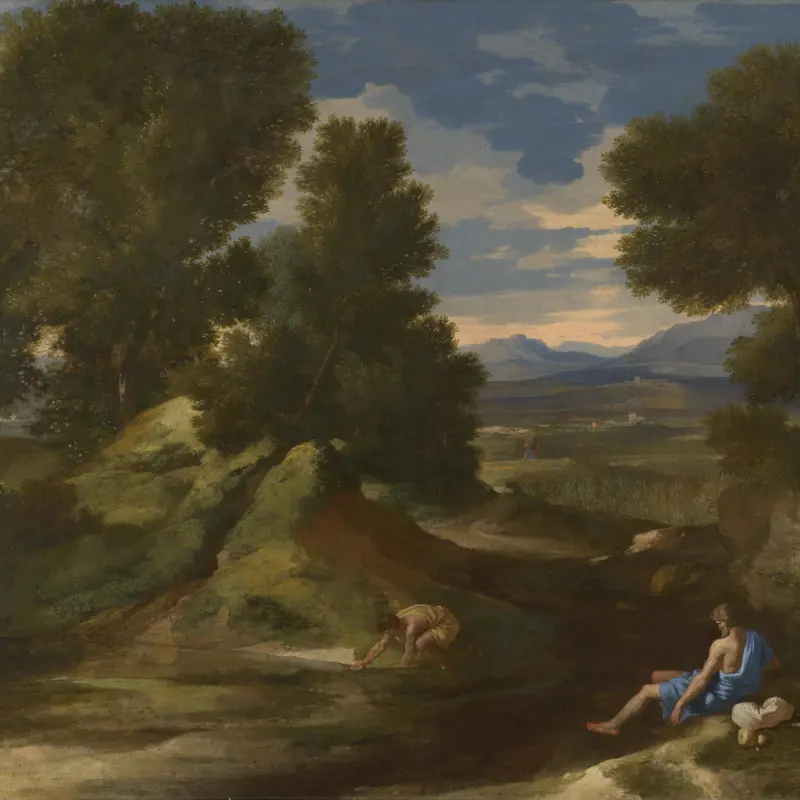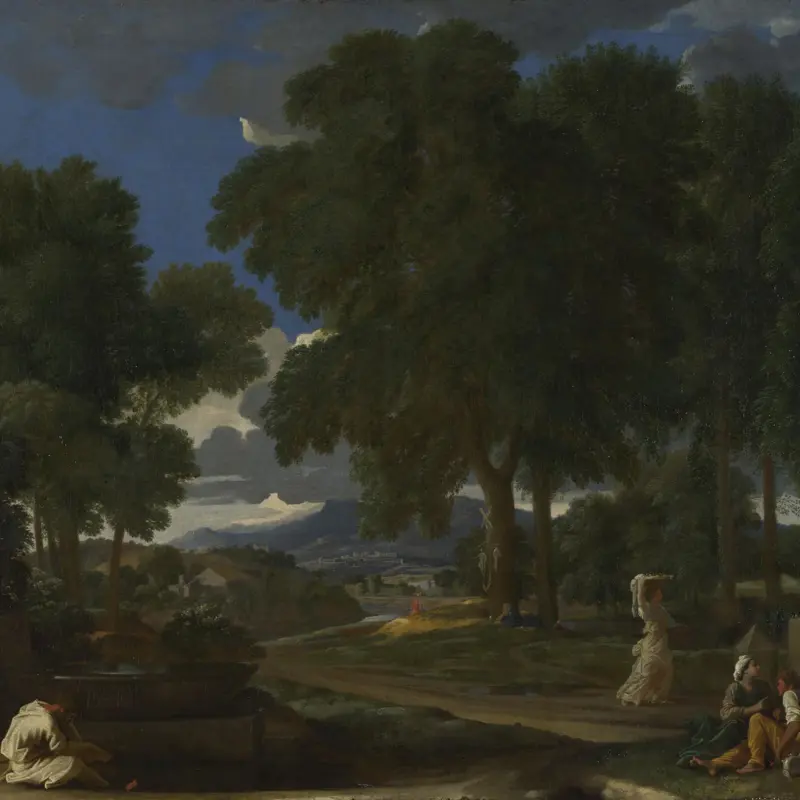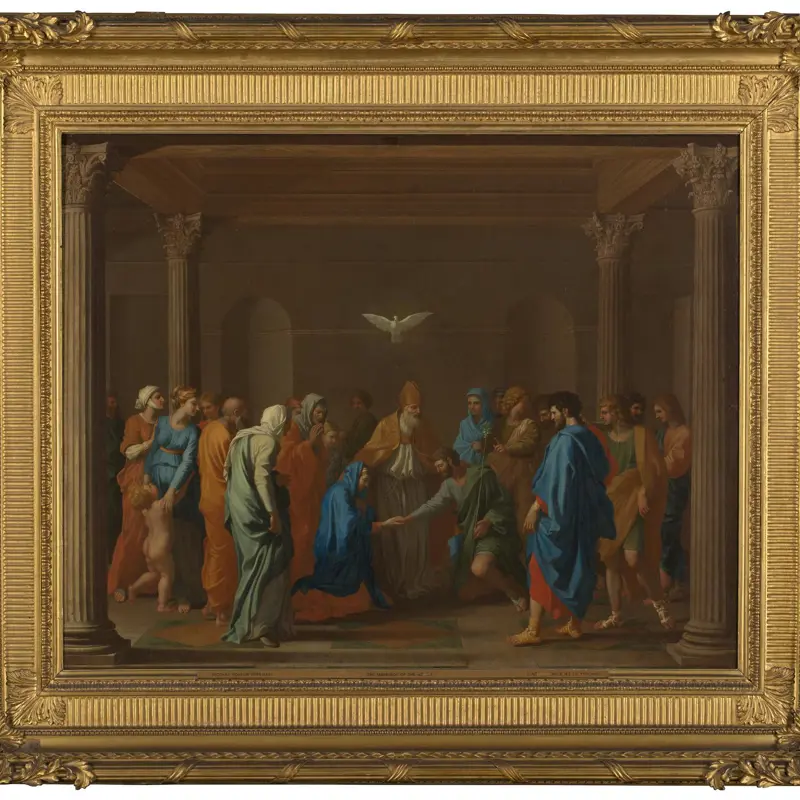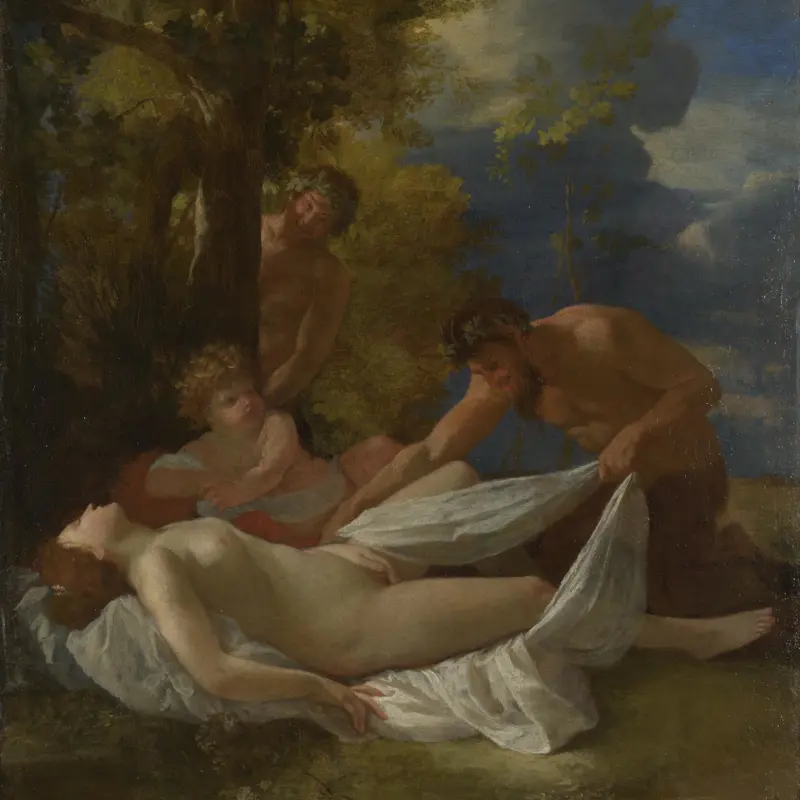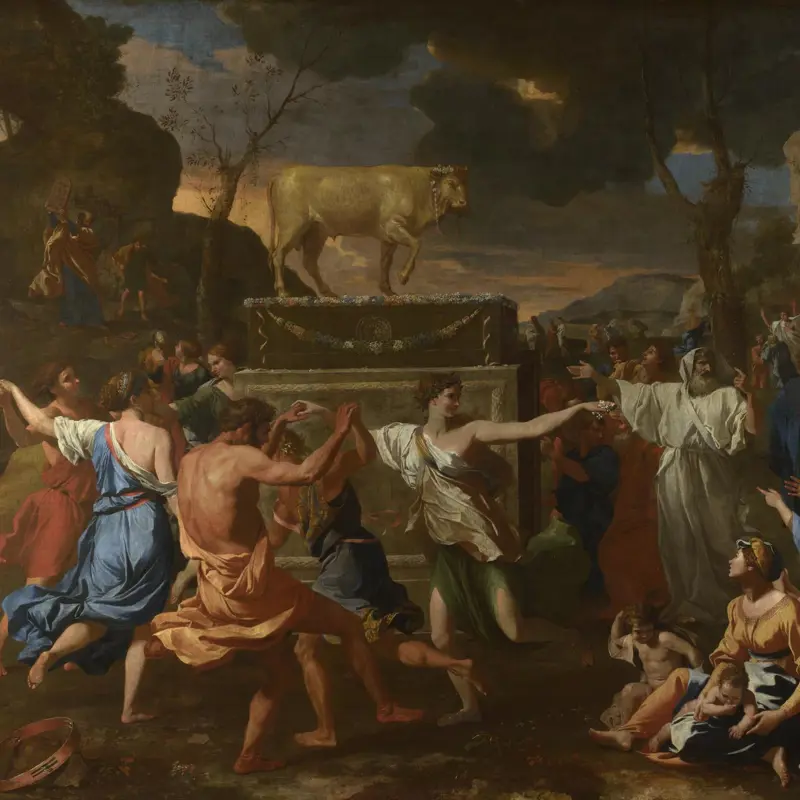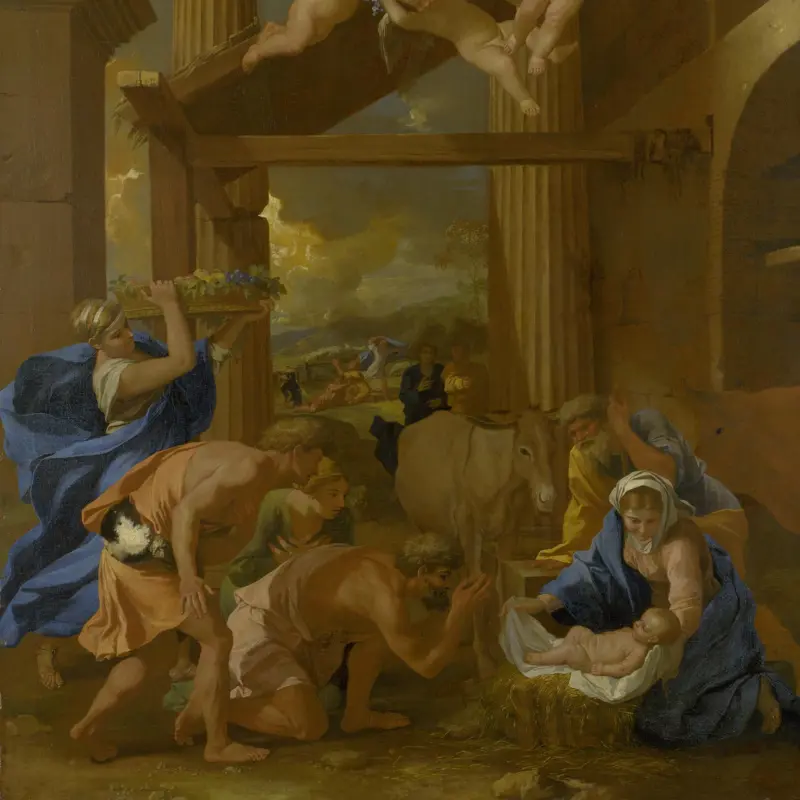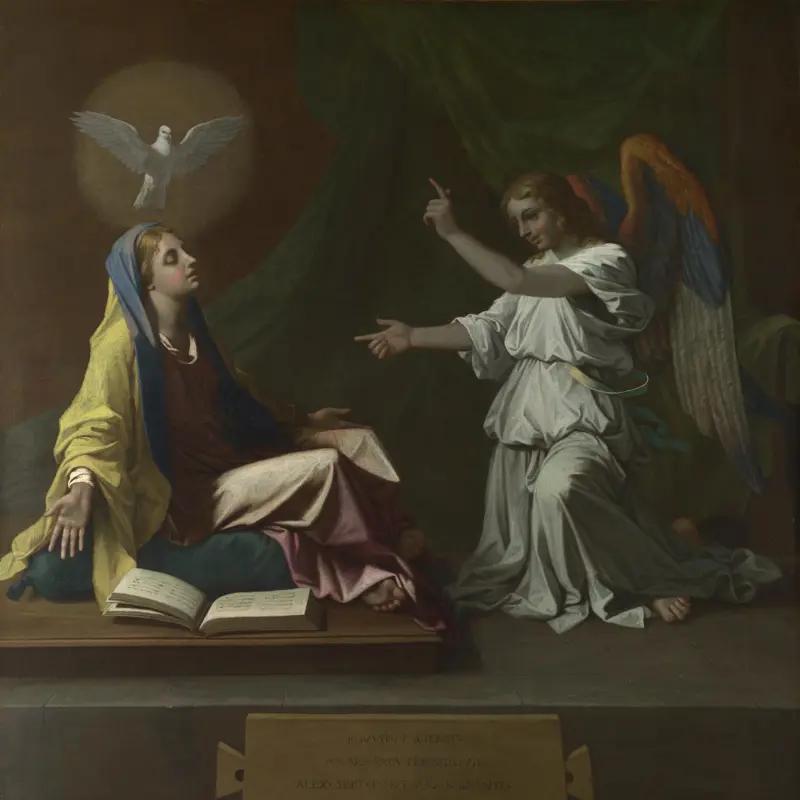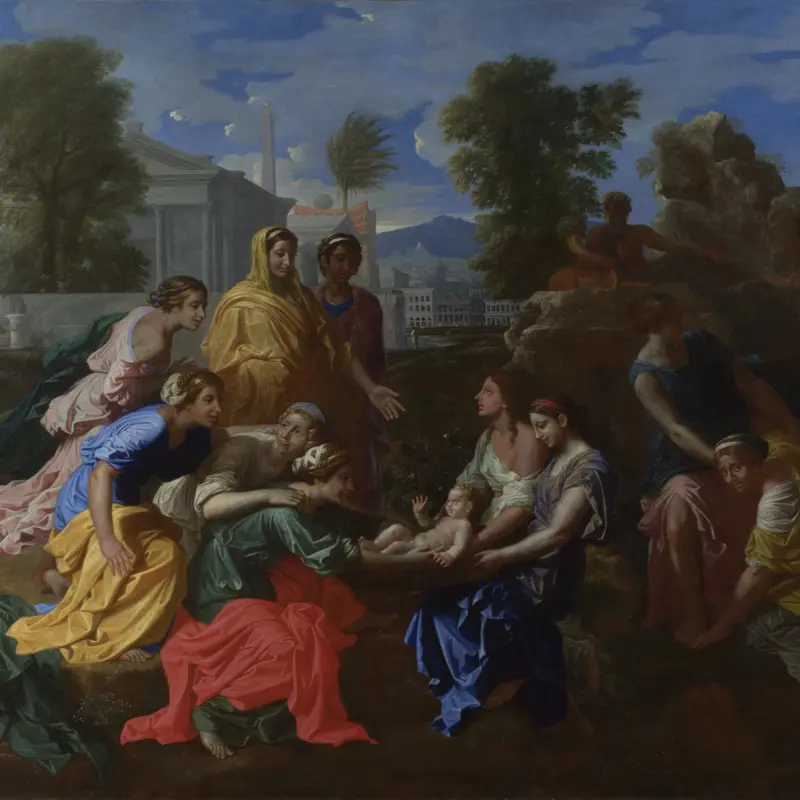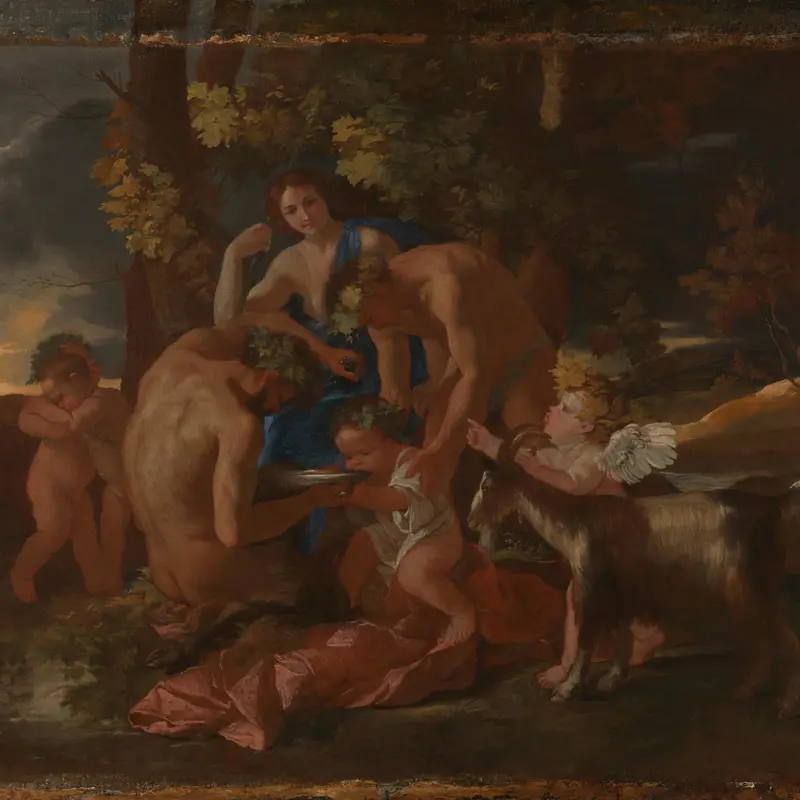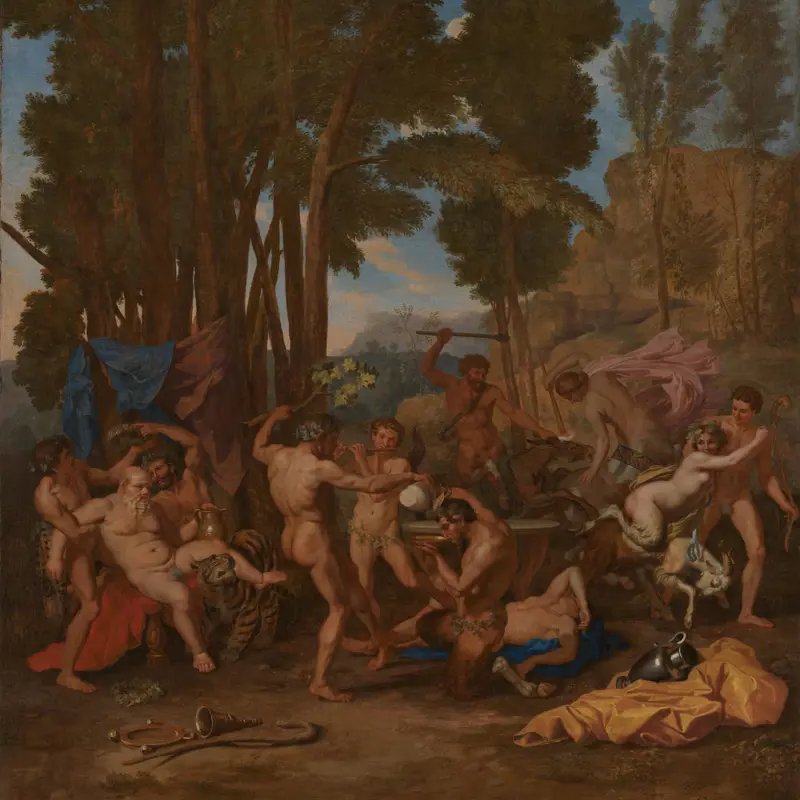After Nicolas Poussin (?), 'The Holy Family with Saints Elizabeth and John', 18th century
About the work
Overview
The Virgin’s cousin Saint Elizabeth kneels to present the infant Saint John the Baptist to the Christ Child, who is held by his mother. With its warm colours, golden light and sweet interaction between two infants, this intimate scene is very touching. Saint Joseph leans on what looks like a long ruler, and on the stone block behind him is a wooden T-square, a draughtsman’s tool for drawing accurate vertical and horizontal lines. These objects may allude to his mastery of mathematics and architecture rather than his more modest role as a carpenter.
The composition is classical in its simplicity and order, and the large, solid bodies and drapery folds which recall antique statues. The cracks in the stone columns and wall symbolise the collapse of pagan worship and the triumph of Christianity.
This looks like a painting by the seventeenth-century artist Nicolas Poussin, but it is actually an eighteenth- or nineteenth-century copy of a work by him.
Key facts
Details
- Full title
- The Holy Family with Saints Elizabeth and John
- Artist
- After Nicolas Poussin (?)
- Artist dates
- 1594 - 1665
- Date made
- 18th century
- Medium and support
- oil on canvas
- Dimensions
- 68.6 × 50.8 cm
- Acquisition credit
- Presented by Francis Turner Palgrave, 1894
- Inventory number
- NG1422
- Location
- Not on display
- Collection
- Main Collection
Provenance
Additional information
Text extracted from the ‘Provenance’ section of the catalogue entry in Humphrey Wine, ‘National Gallery Catalogues: The Seventeenth Century French Paintings’, London 2001; for further information, see the full catalogue entry.
Bibliography
-
1914O. Grautoff, Nicolas Poussin: Sein Werk und sein Leben, Munich 1914
-
1939W. Friedländer (ed.), The Drawings of Nicolas Poussin: Catalogue Raisonné, part 1, Biblical Subjects, London 1939
-
1946Martin Davies, National Gallery Catalogues: French School, London 1946
-
1957Martin Davies, National Gallery Catalogues: French School, 2nd edn (revised), London 1957
-
1966A. Blunt, The Paintings of Nicolas Poussin: A Critical Catalogue, London 1966
-
1980D. Wild, Nicolas Poussin: Band I, Leben, Werk, Exkurse, Band II, Katalog der Werke, Zürich 1980
-
1982D. Gordon, The National Gallery Lends: Paintings of the Warm South by Foreign Painters in Italy in the Seventeenth Century (exh. cat. Herbert Art Gallery, 13 March - 25 April 1982; Derby Art Gallery, 8 May - 12 June 1982; Doncaster Museum and Art Gallery, 19 June - 25 July 1982; Victoria Art Gallery, 6 August - 4 September 1982), Coventry 1982
-
1985C. Wright, Masterpieces of Reality: French 17th Century Painting (exh. cat. Leicestershire Museum and Art Gallery, 23 October 1985 - 2 February 1986), Leicester 1985
-
1995H. Wine, 'Poussin Problems at the National Gallery', Apollo, 1995, pp. 25-8
-
2001H. Wine, National Gallery Catalogues: The Seventeenth Century French Paintings, London 2001
-
2001
C. Baker and T. Henry, The National Gallery: Complete Illustrated Catalogue, London 2001
About this record
If you know more about this work or have spotted an error, please contact us. Please note that exhibition histories are listed from 2009 onwards. Bibliographies may not be complete; more comprehensive information is available in the National Gallery Library.

